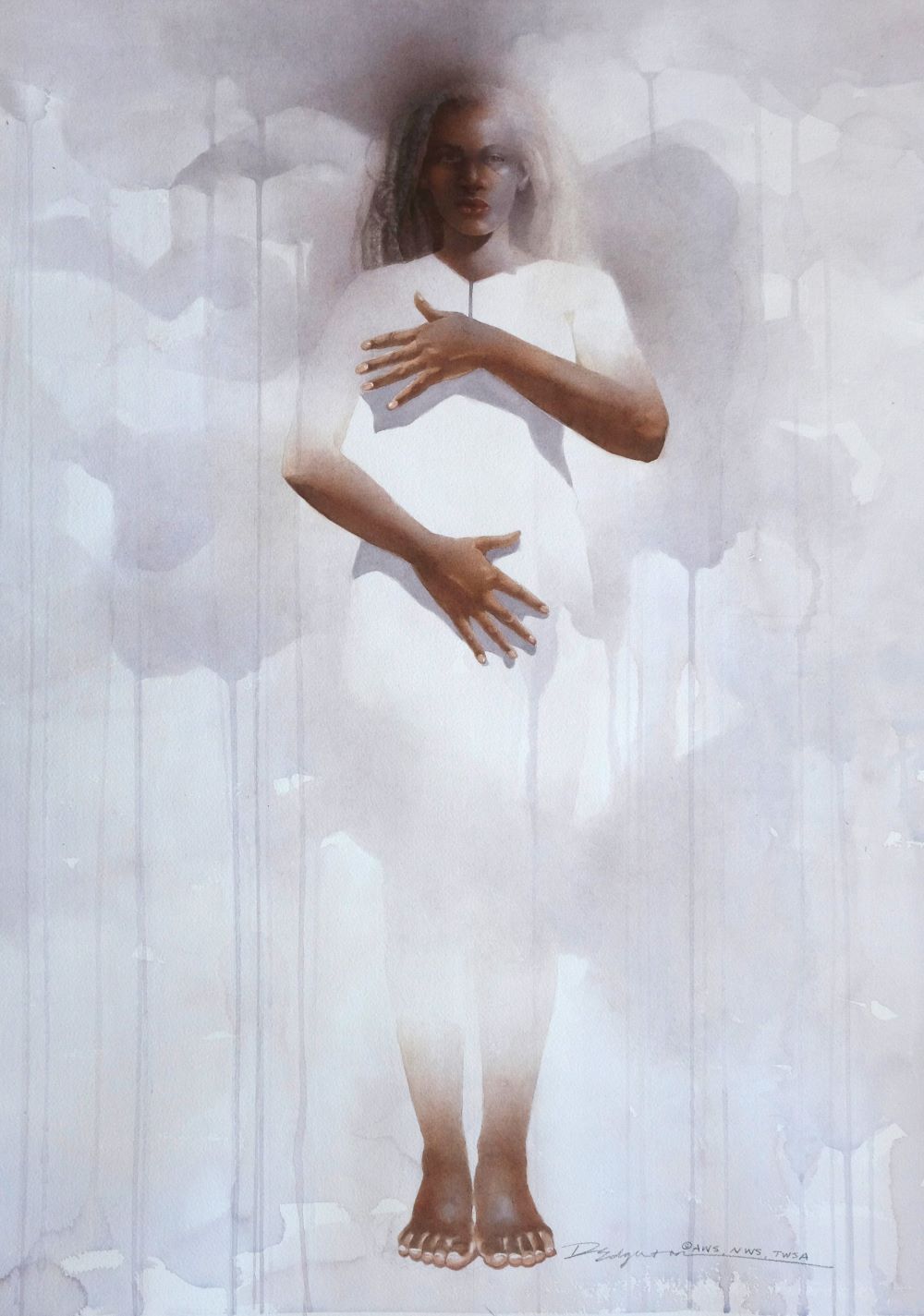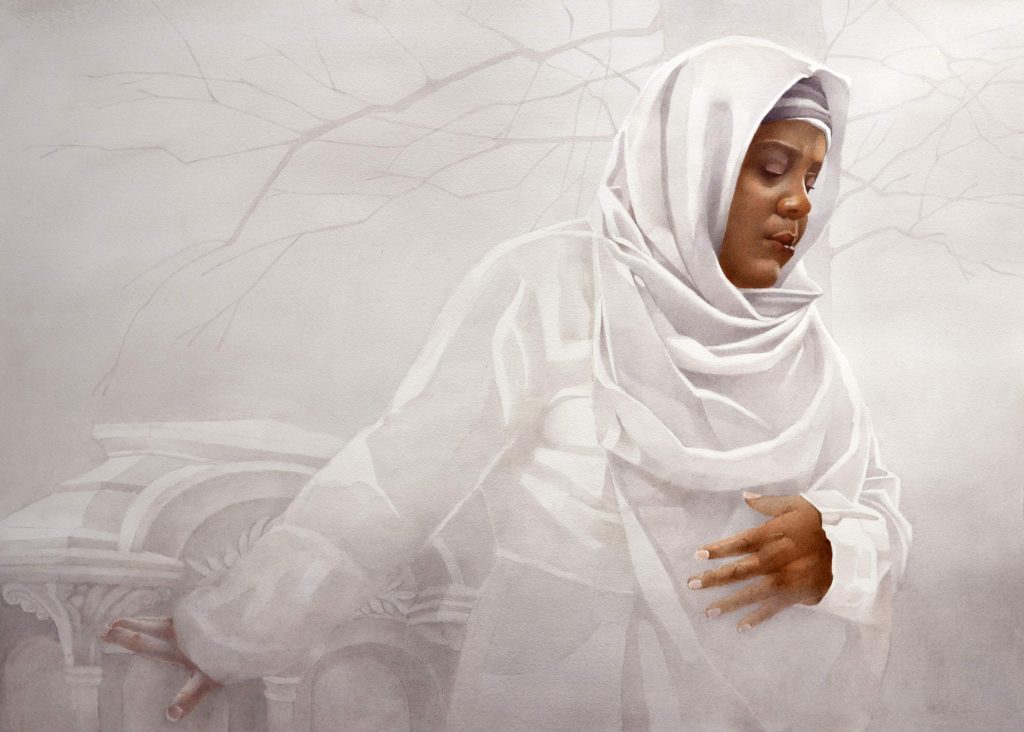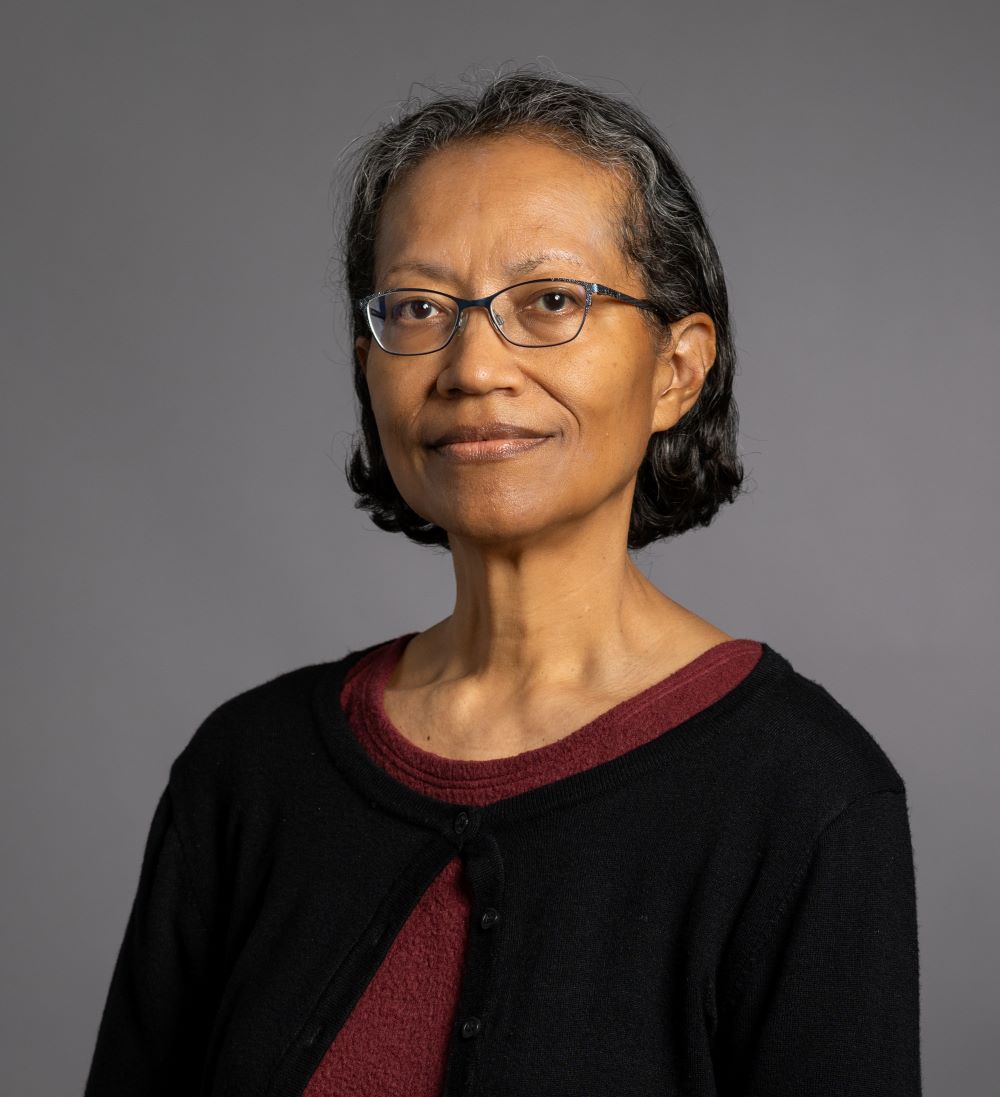*Editor’s Note: The “Views from NAU” blog series highlights the thoughts of different people affiliated with NAU, including faculty members sharing opinions or research in their areas of expertise. The views expressed reflect the authors’ own personal perspectives.
 By Debra Edgerton
By Debra Edgerton
Assistant professor in the School of Art and Design
Edgerton is a 2023 President’s Distinguished Teaching Fellow and an assistant professor in the School of Art and Design. Her work is currently featured in the exhibit “Vision & Sound: An African American Experience” at the Sedona Arts Center, and her piece “Grace of God part 2” will be installed at NAU’s Center for Inclusive Excellence and Access this spring.
One of my earliest memories growing up was my mom creating sumi ink drawings of small birds perched on branches. I’m not sure if that was the beginning of my sister and me becoming artists, but I don’t remember art before those moments.
My creative process surrounding the topic of multicultural identity compares the intersectionality of my African American and Japanese heritage and the ramifications of having parents who met during the occupation of Japan after World War II. Our household was a mix of two cultures. Through visuals, smells, tastes and sounds, it was hard to separate the senses from the experiences. Living in a household of converging cultures and trying to make sense of who I was through difference was frustrating. I finally relinquished that thought and instead looked for the commonality in those differences.

I am fascinated by all things dissimilar and trying to find ways to connect the dots between divergent things. I think as I tried to make sense of my own identity, I realized that living in divisive communities makes the dissimilar an active and ongoing project of taking things apart and putting them back together in various configurations. That’s what I do with my art, and it can look deceptively ordinary. My paintings appear to be celebrations of culture and identity. However, the layers of the unfolding stories provide glimpses into the struggles of lives unseen. Every piece of art I create has a story. Many are connected, but rarely are they art for the sake of creating art. Images matter. Words matter. Stories matter. And we all have stories.
I have used my love for storytelling and for visual art to speak to connections that can be found within varying communities. I could have said I am a visual storyteller. However, it’s not just the visual that captures a story. I love to read. I have books by authors such as James Baldwin, bell hooks, Langston Hughes, Toni Morrison and Zora Neale Hurston on my bookshelves. I love the beauty and flow of the sound of words and how text can enhance an experience. I love all forms of communication—the visual, verbal and written—in telling stories. There is something about bringing together the voice and/or text with a visual that brings me back to my own memories of childhood story time at our local library.
My early love of children’s books continues to be a part of how I map out my dissimilar worlds. In those days, I escaped into those stories and imagined places and lives that never seemed possible. Inclusive imagery was not a part of those early books. But I was already processing how I could create my own “imagined self” in those environments. The idea of connecting the dissimilar started early and eventually led me back to my own background and stories from my parents.
As an adult, I listened to my dad reflect on his experiences growing up, and I started to understand who I was within the fabric of his life. As I started telling his recollection of the past, I could see how I fit in. This allowed me to process my own experiences within our household and what that could look like in a visual form. Connecting stories with visuals became how I create my art. And as I came to understand myself, my art opened up and allowed viewers to see their own experience through my work. Stories truly can be the beginning of how we view ourselves. And those stories are art in its truest form. Art is in the fabric of everything we do.




